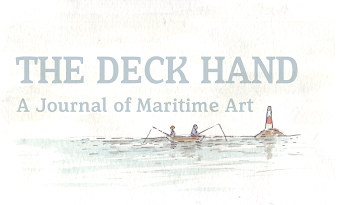Shoal Music: No. 2. Another Side of Jimmy Buffett
In 1982, during a surprise performance with Joan Baez, Bob Dylan sang Jimmy Buffett's "A Pirate Looks at 40." Years later, in a 2009 chat with Bill Flanagan, Dylan praised Buffett as a top songwriter, having a particular fondness for his song, "Death of an Unpopular Poet." This might surprise those who know Buffett solely as the purveyor of a tropical party lifestyle, aimed at drunk, sunburned crowds clinging to inflatable flamingos in paddling pools tinged with spilled margaritas.
Yes, that Jimmy Buffett does exist. However, there's another Buffett all together including perhaps the one that appealed to Dylan.
Early Buffett is a solid songwriter. He crafted whimsical narratives and straightforward stories—tales of swiping candy bars from Mini Marts and nostalgic musings evoked by tire swings. He wrote with unabashed directness about the small joys of life—from favourite dogs to bubblegum and hot donuts. He penned love songs for the washed-up beach bum, encapsulated in ballads like "Trying to Reason with Hurricane Season," "Tin Cup Chalice," and "A Pirate Looks at 40."
Songs of the marooned dreamer, life lived in perpetual limbo, dreams on hold, wasting away in a gulf beach bar, living off the last dregs of a once-generous stipend. A Key West Hemingway, minus the bravado, or a seaside Richard Brautigan without the existential despair.
As his fanbase grew, the beach drifter evolved into a lovable goofball, embodying the aspirations of those reluctant to grow up, preferring eternal sunshine instead. Unlike Dylan, Buffett’s style fostered easy camaraderie with his audience. Despite the weather he was never hiding behind shades.
Then there's "Margaritaville," a tune that mushroomed into hotels, theme parks and restaurants. The hippie dream died, paved over by the Parrothead empire of cheeseburgers, tailgates, and blender-induced horror.
But the story needn't end there.
Through increasing wealth and success, another persona quietly appeared on his albums. The loser beach bum transitioned to worldly adventurer. With a novelist's eye, he became a blend of Mark Twain and Carl Hiaasen, a melody-chasing nomad skimming equators in seaplanes, with a moisture warped paperback on the passenger seat. His wanderlust fueled by literary inspirations like Twain's "Following the Equator."
His mass appeal, however, is always at a risk of engulfing his artistic essence. On occasions he appears a victim of audience capture. Such as his recent flirtations with the modern country, "red cup" crowd. Although a lifelong Democrat, Buffett's public persona seems increasingly discordant with his core crowd.
Nevertheless, his true self endures, palpable in the deeper tracks on his albums. For every dumb song like "Too Drunk to Karaoke" or "Math Suks," there exists the profundity of "That's What Living Is to Me," his own nod to Mark Twain. Tucked at the end of his '80s album Hot Water, this track serves as Buffett's closest approach to a personal anthem—not quite Leonard Cohen’s "Anthem," but a statement.
Consider also recent, subdued tracks like "Color of the Sun" and "Slack Tide."
As of 2009, Dylan included Buffett among his favoured songwriters, alongside Randy Newman and John Prine. The authentic Buffett might be hard to trace, but listen to a hidden pearl like the one-minute gem "Green Flash at Sunset," available only on YouTube.
It’s a whimsical, fleeting moment, emblematic of the deeper beauty Buffett offers us an escape to—an escape harder to find in time, but for those willing to dive beneath the surface, there's plenty there.





Comments
Post a Comment